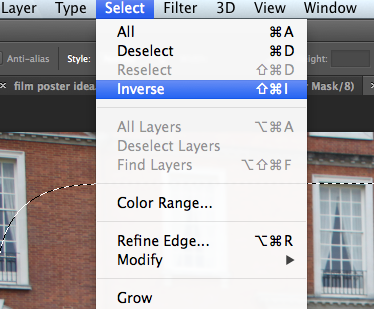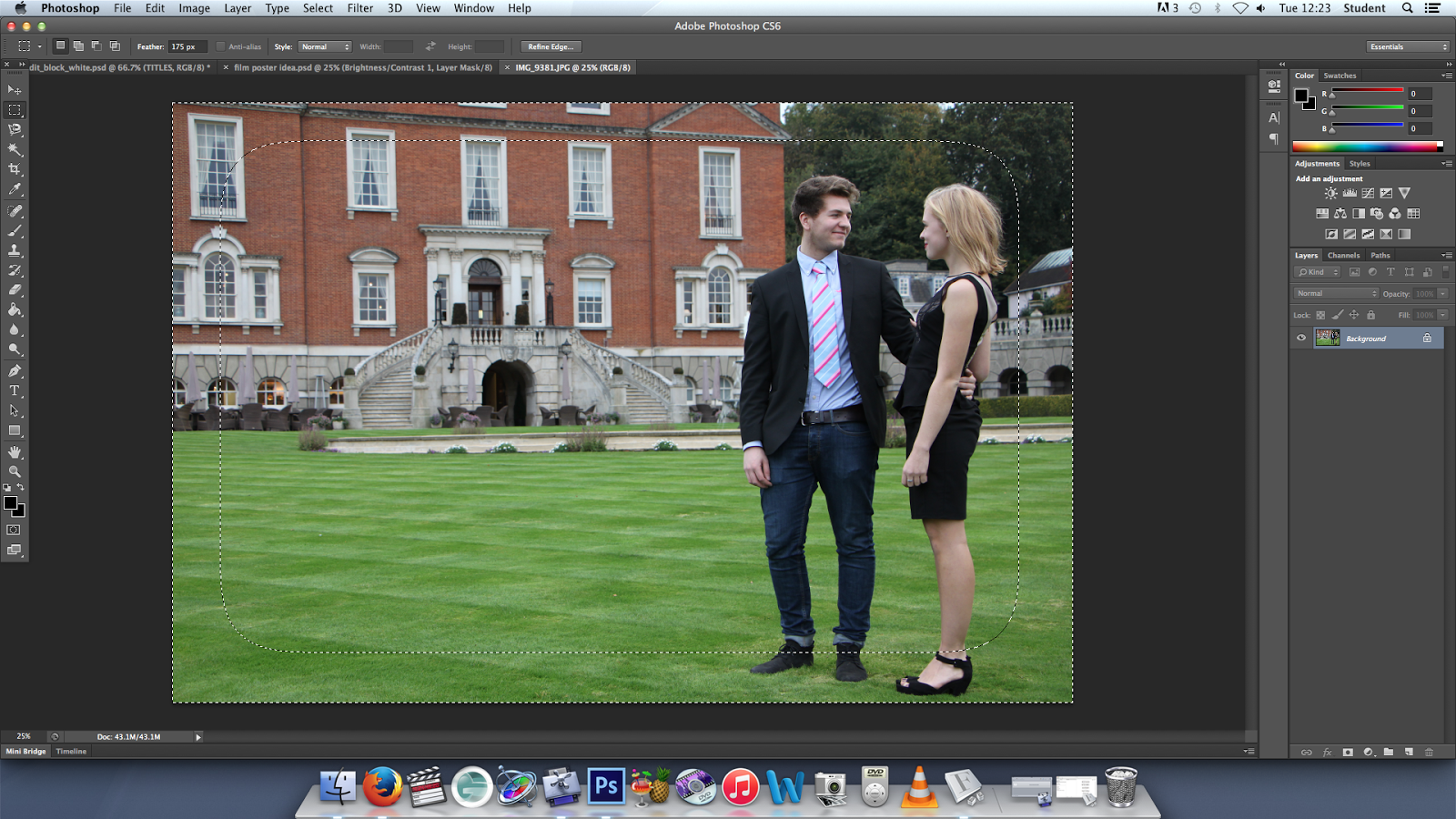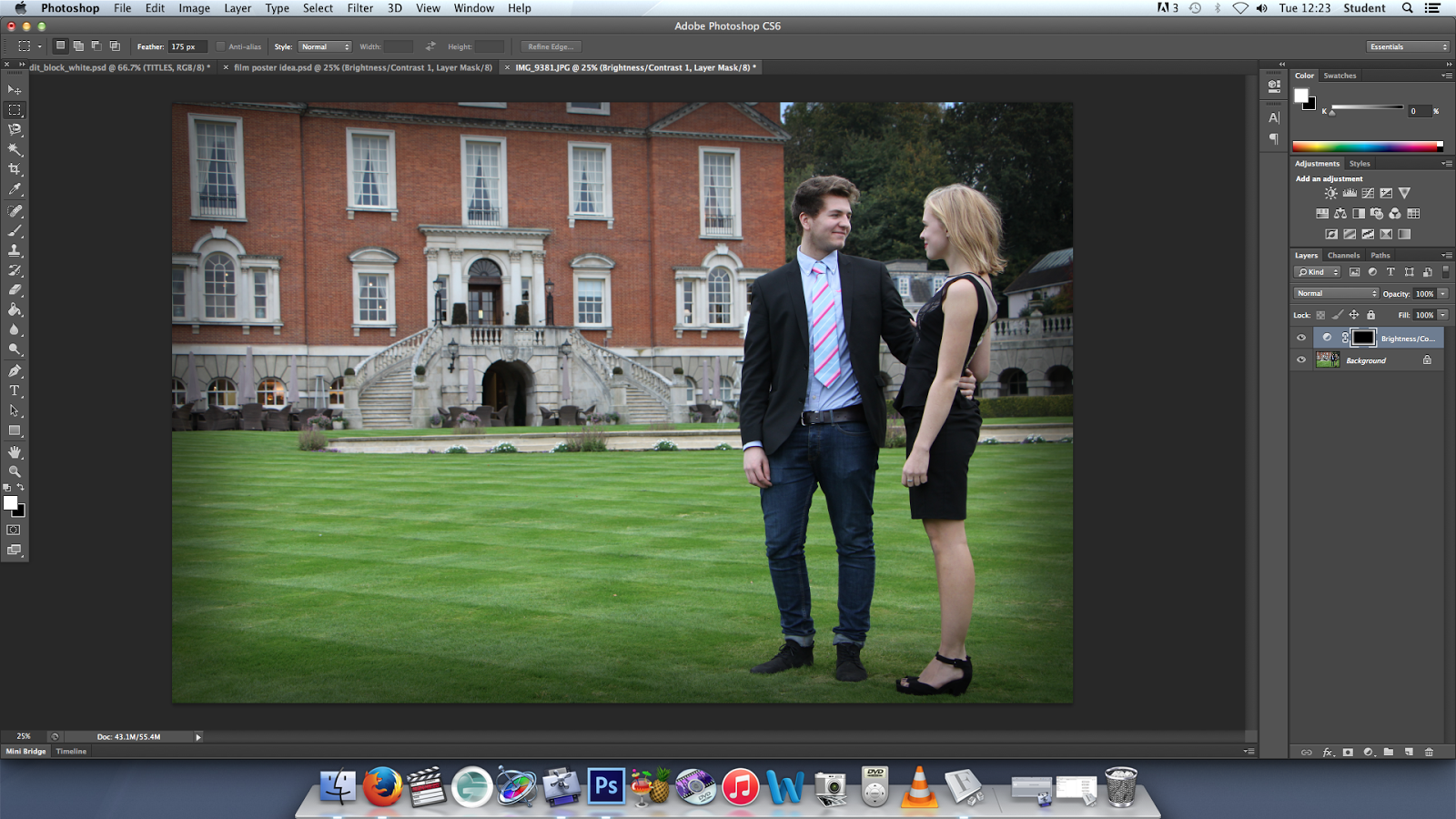FIRST DRAFT:
Drop is the name of this ambiguous film; where the title cleverly refers to two events of the story, the killing of the protagonist and the poisoning of the drink. The film expertly manipulates the reader by creating assumptions that the 20-something female is the antagonist, mischievously having an affair with the bartender. However there is a subsequent plot twist which leads to a malicious attempt to end the love triangle, ultimately ending with a death. The director, R Lincoln - who also created the inspiring film life as we know - denotes this by placing the plot reveal at the end with the clique technique - a flashback, which literally 'makes the penny drop'. This challenges representations in society: where the assumed antagonist is discovered to be the innocent. And of course this happens very intimately, as the nature of the film is short.
A film of this type usually has limited settings, but Drop manages to overcome this sometimes simplistic limitation and includes about 5 contrasting locations which really makes the film highlight it's rich storyline. This allows for only 3 main characters where the audience require detailed information about their characteristics during the film. All three characters are executed well by Ettie Greenwood, Joe Willmott and James Garbis (up and coming actors/actresses, that could really make their print in the film world during the next few years).
Twisted thoughts about love lead to a surprising conclusion in Drop, with one character completely in the dark as to whats occurring - the innocent party doesn't deserve what happens. The plot gives the observer what they think is a sweet story about a couple who are embracing their youth and living their lives to the fullest by seizing opportunities which wouldn't necessarily be given to the average person. Some of the themes and genres include betrayal, love, lust and tragedy. These are shown through the actions of the young adults. The story involves these young adults who are in a relationship, after organising a drinks date we see the lead up to this, and date itself.
Once settled at home and accompanied by a glass of wine, 'Drop' is a conspiring and compelling film bound to keep you awake. The way in which the director, Lincoln, has staged out this short film, allows the events to play out without the need to stimulate too much lateral thinking. All the same, there is enough captivating elements to keep the enigma running throughout the audiences mind.
-----------------------------------------------------------------------------------------------------------------------
SECOND DRAFT:
This film is ambiguous on a number of different levels - Firstly, its title which cleverly refers to both the death and the action of poisoning a drink. Secondly, where the film intelligently misleads its' audience into expecting a different antagonist, creating a 'who dun it' style film.
A film of this genre - short - usually has a scarcity of settings, however Drop manages
to overcome this sometimes simplistic limitation and includes a plethora contrasting locations which really makes the film excel by it's rich
storyline. One location, the R.A.C Country Club in Epsom mirrors the motif of the film perfectly: the upper middle class characters display opulence, affluence and wealth which is also denoted in the building. However, the crime caused at the country club may 'turn a head' to viewers as this class is not usually associated with 'crime of passion'. On the other hand, more in sync with the short film type, the characters are limited where the audience
require detailed information about their personalities during the
film. All three characters are executed well by Ettie Greenwood, Joe
Willmott and James Garbis (up and coming actors/actresses, that could
really make their print in the film world during the next few years).
The plot follows the relationship of a couple whereby one of them is
silently unhappy whilst trapped in a 'love-triangle'. Lincoln denotes this by placing the plot reveal at the end with the clique technique - a flashback, which literally 'makes the penny drop'.
By having the female director R. Lincoln - who also created the inspiring film life as we know - this film could be argued that it emits a feminist ideology; through the power that the female character holds whilst being the dominant participant in the crucial love triangle. There is a great debate over whether these values are consciously displayed or not, of which readers can discover more on the 'twitter-sphere' where the heated debate continues to relish.
Yes, the film is feminist: at the start of the film, the women is molded into a character ideology that signifies her power, wealth and dominance. She always puts her man second, and tries to avoid light hearted 'time filling' conversations. This therefore shows feminism as the women is seen as the leader, and not clinging on to her man dependably like so many films nowadays that take the stereotypical ideology.
No, the film is not feminist: but what about the ending? Where the female is seen in a very vulnerable light, as she panics over then death she had subconsciously caused. This is what contradicts the feminist view and could cause the film to therefore take a more neutral perspective.
Once settled at home and accompanied by a glass of wine, 'Drop' is a
conspiring and compelling film bound to keep you awake. The way in which
the director, Lincoln, has staged out this short film, allows the
events to play out without the need to stimulate too much lateral
thinking. All the same, there is enough captivating elements to keep the
enigma running throughout the audiences mind. It is a must see for short film fanatics.








.png)









